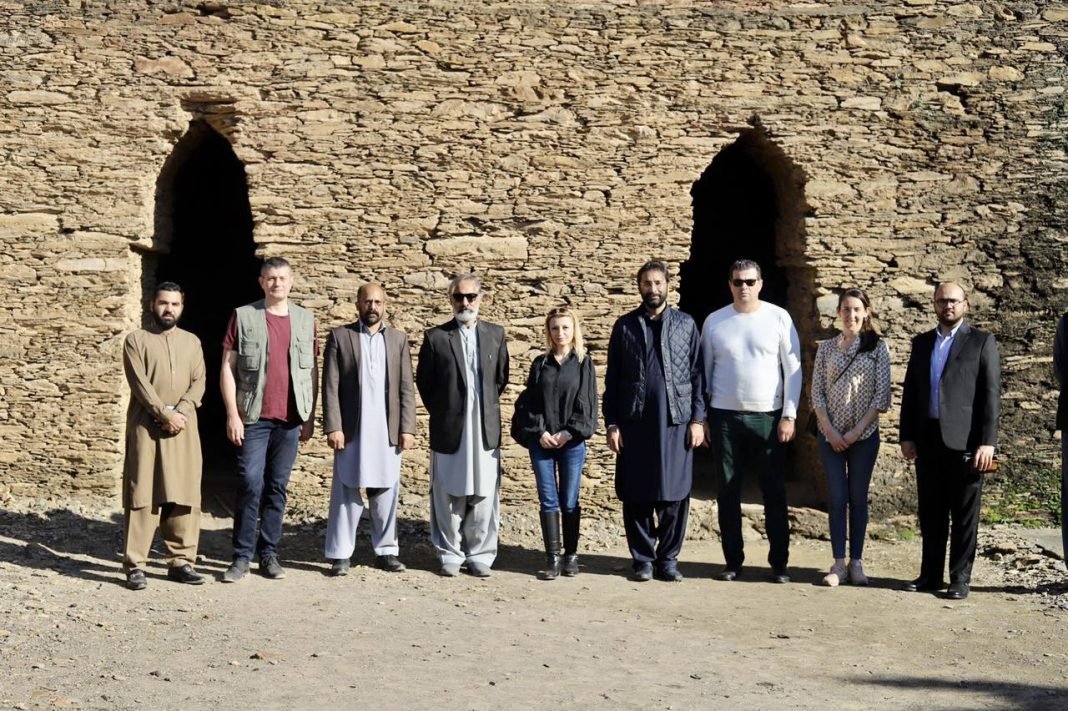Mardan, 21 November 2022 (TDI): Bulgarian Ambassador to Pakistan, Irena Gancheva, and the Bulgarian delegation visited Takht-i-Bahi, Mardan on 20 November 2022.
The delegation received a briefing on the World Heritage Site’s historical and archaeological significance.
Irina Gancheva, the Ambassador of Bulgaria, praised the government of Khyber Pakhtunkhwa’s Directorate of Archaeology and Museums for its work in preserving the region’s history and promoting religious tourism there.
Takht-i-Bahi is an outstanding illustration of Pakistan’s extensive history and culture. Foreign visitors and delegations are flooding to the tourist destination after being moved by their visit to the area’s well-preserved and historic Buddhist monastery.
Takht-i-Bahi has been designated as a world heritage site by the United Nations Educational, Scientific, and Cultural Organization (UNESCO).
Takht-i-Bahi
Located in Mardan, Khyber-Pakhtunkhwa, Pakistan, Takht-i-Bahi is an Indo-Parthian archaeological monument that was once a Buddhist monastery.
In all of what was once Gandhara, the location is regarded as one of the most significant Buddhist relics and has been “exceptionally well-preserved.”
The monastic complex was established in the first century CE and remained active until the seventh. Archaeologists believe that the complex is a particularly good example of the style of Buddhist monastic buildings from the time period.
Also Read: US Ambassador Celebrates Pakistani Women in STEM
In 1980, Takht-i-Bahi was inscribed on the UNESCO World Heritage List. The name Takht-i-Bahi refers to a monastery that was part of the Purusapura dominion and served as a center for Buddhist learning.
According to local lore, the springs nearby or the two wells on the hill may have given the location its name. Takht in Persian means “top” or “throne,” and bahi means “spring” or “water.”
There were two springs on the summits of mountains, and their combined meaning is “spring from the top” or “high spring.” Another interpretation put forward is the “throne of genesis.”






